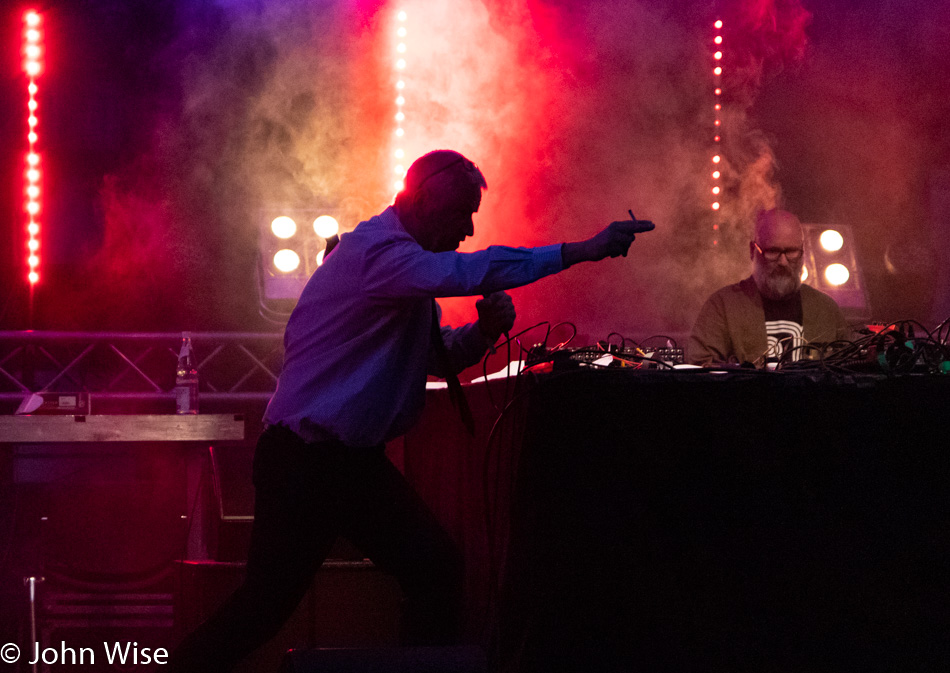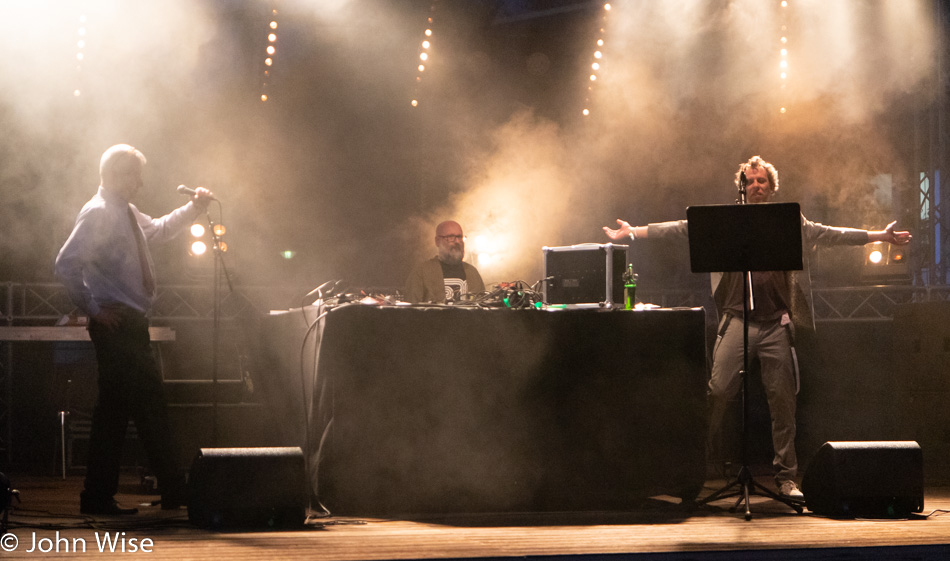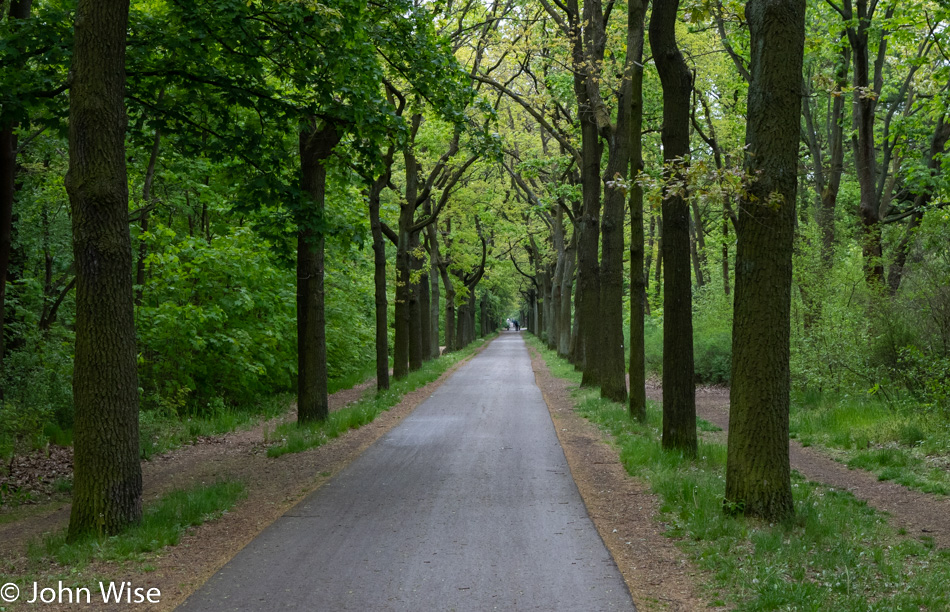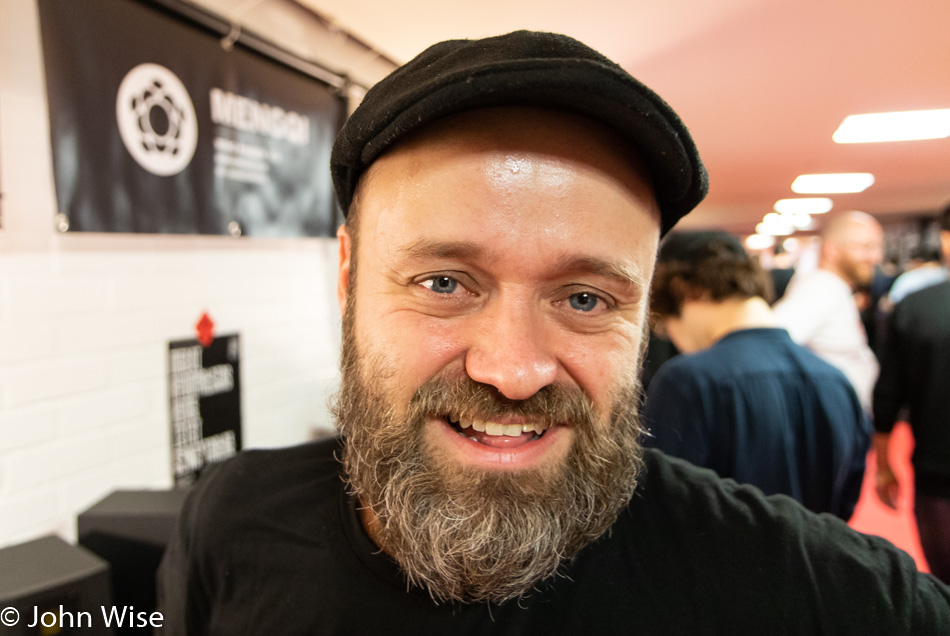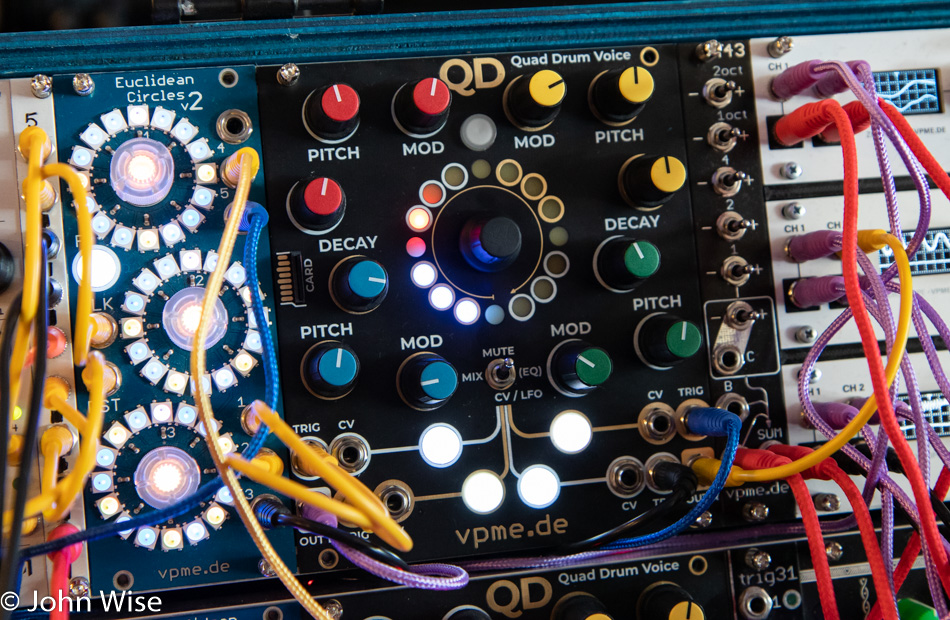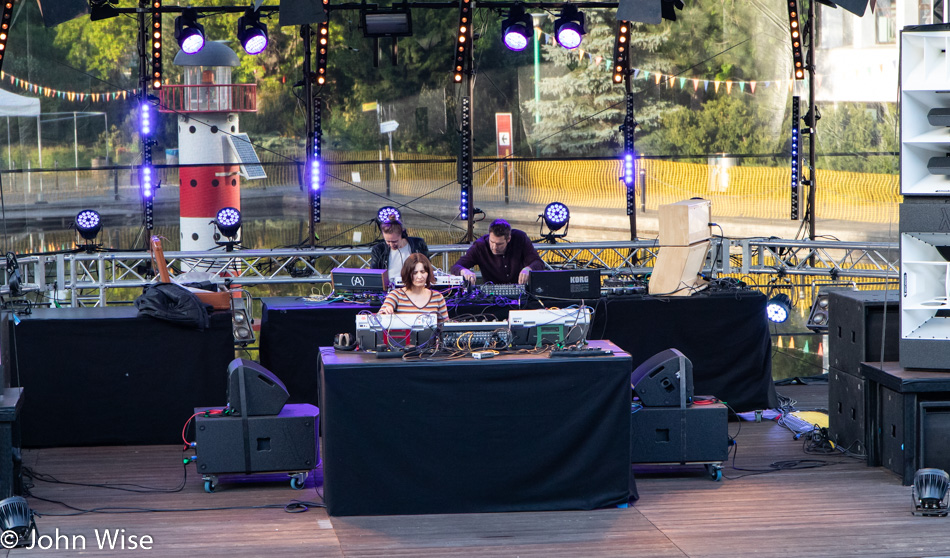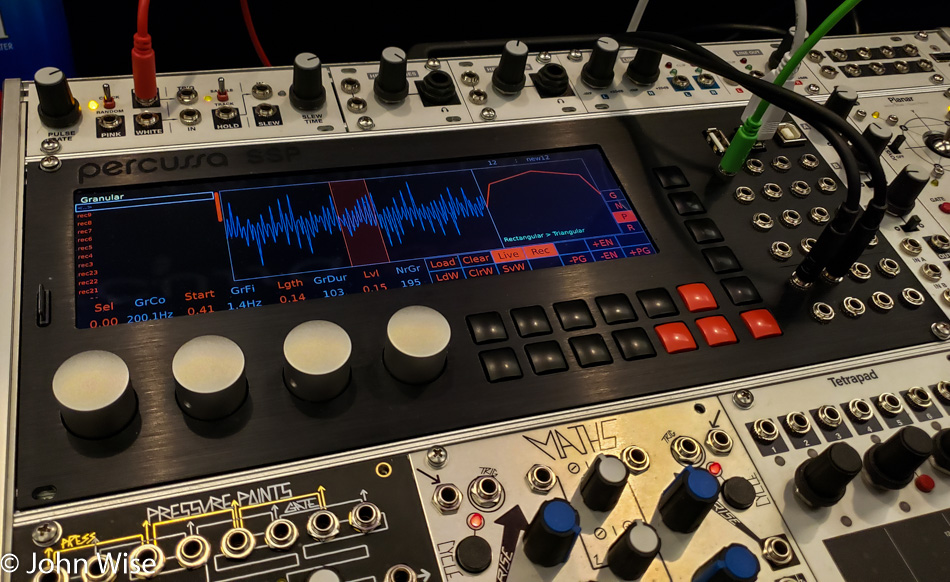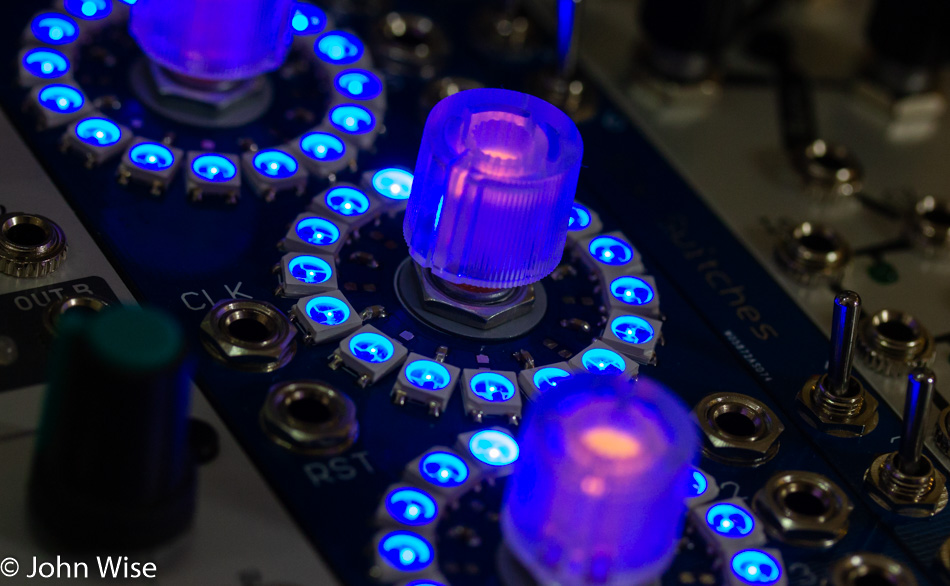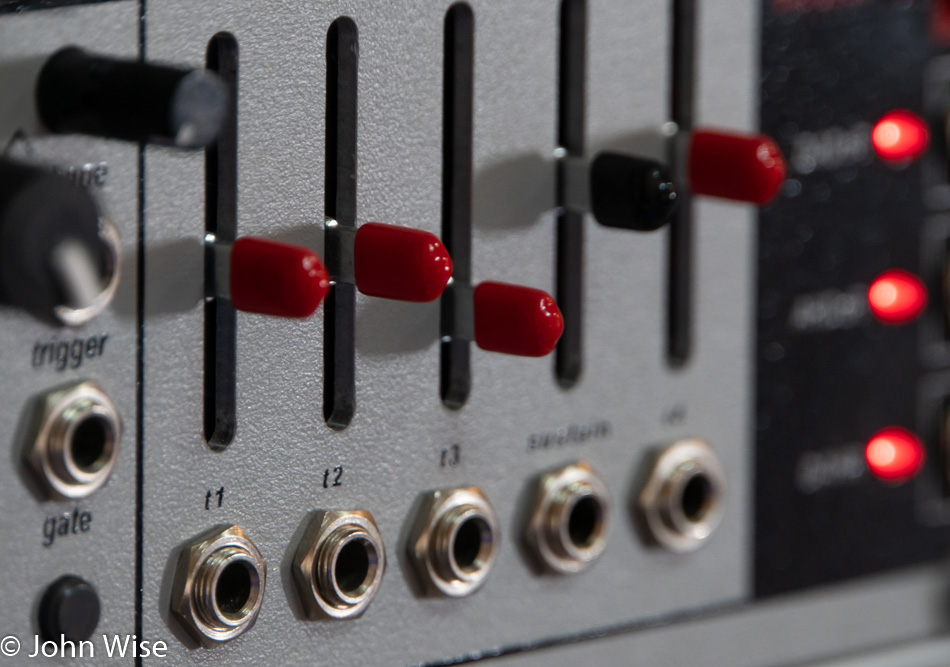
Welcome to my last full day in this eastern corner of Berlin, where I’ve taken a liking to the quiet neighborhood and my daily walk to and from FEZ. Today is perfect, allowing me to leave my jacket in the room in order to lighten my load and not worry about where I stow it at Superbooth. I’ve progressively gotten later and slower on the 4.5km walk over the Spree River and into the woods. While I’ve shared a few images of the forest, I thought it was time to show what it is I walk by as I’m passing through the neighborhood I’m staying in. Springtime is in full celebration, and I can’t throw enough superlatives at my feelings of enthusiasm for it.

If there was a war for identifying a problem and stickering the world would win the offensive, the anti-Nazi side would surely be winning. I’ve seen anti-AFD (right-wing nut jobs) graffiti in an impossible spot to spray paint high up on the side of a seven-floor building, but there it was. Every day I see something written, plastered, or painted on surfaces everywhere, letting fascist dickheads know where people stand. The only problem is that there’s a giant silent majority that is implicitly supporting the ugly rise of nationalism due to fear of non-white immigrants who stir the anxiety that Germans will lose their Germanness if those coming for work do not integrate into the culture.
Their concerns cannot be dismissed out of hand, as I’ve seen first hand while living in Frankfurt 25 years ago and subsequently walking around Germany and other corners of Europe the past couple of years that there is self-isolation from those who have taken refuge here, but isolation also from Europeans who hold some deep-rooted hostility towards those who are failing to conform to social norms and blend in.
As the future is never explained at the bottom of the cup of tea leaves, we can only hope and work hard towards making our experiment of living in a civilization come to positive fruition. Maybe encouraging people to eat more Nazis might help, too, so I think I’ll have a bowl of them later.

The ADDAC System‘s crew, led by the skinny guy on the left, won the Superbooth 2019 award for Biggest Rack at Show. These Portuguese guys are bundled with an incredibly well-adjusted sense of humor and are welcoming in the most heartfelt way. André Gonçalves (the skinny guy) is the founder of the company whom I first encountered online when I ordered the MONSTER Frame you see behind the guys.
Now that I’ve sung their praises, let me tell you of the evil they represent. The rack you see is different than mine in that it has an extra row at the top that attaches to the base of the frame, and then down in the front row is a new addition to their brand of exploiting people’s financial stability in the form of a single 197hp row that conveniently sits in front of the already enormous 1,379hp of MONSTER. The expense of filling this thing is bad enough without adding the insult of being able to add another 394hp of aesthetically integrated wallet-emptying torture.
When I was asked by Andreas Berthling (in the center) which ADDAC modules I owned, I almost fell on the floor in laughter at the thought they should be responsible for taking anything else from me; at least I still have some dignity and haven’t given them everything. Of course, most of this is hyperbolic nonsense as, given the opportunity to acquire a second MONSTER and add a couple of rows of their modules to my collection, I’d be right on it. Sadly, it’s difficult to get your hands on the modules in the United States to gather first-hand experience of just what they are like. So this is a hint to the skinny guy to bring on a retailer or two in the U.S. who ALWAYS have everything in stock so John Wise can have the convenience of not needing to head to Lisbon to learn more about things like the Voltage Controlled Stochastic Function Generator, Marble Physics, and the Lissajous Curves. Finally, the quiet guy on the right is Ruben Costa, who I think would be more talkative if he grew a beard.

Meet Dan Green, Baby Green, and Kendra, who without the baby would probably be only sorta cool as the force behind 4ms Company. Oh, I know someone will correct me and say Kendra and the baby are not officially part of the company of wireheads who build some great modules, but I’d disagree because anyone who is happily married knows that much of their passion, drive, and dedication comes to them from being soundly in love. Maybe you don’t see that love in the photo as they stare at me and my camera, but I saw them look at each other and hand Baby Green between each other, so I can tell you with greater certainty than the next 4ms module being released on time that they are digging life and the bundle of love between them.

Ah, my favorite teacher on the internet is Chris Meyer. I first learned of his wizardry more than a decade ago when I was trying to learn Adobe After Effects, and he and his wife Trish were masters of that universe. Today, Chris is doing the same for the modular community with his Learning Modular website. His methodical deep dives into the intricacies of systems, concepts, and individual modules come from being immersed in electronic music since way back in the late 1970s. Most recently, he collaborated with Kim Bjørn to produce the book titled PATCH & TWEAK – Exploring Modular Synthesis, which is epic in the way it looks at the current state of Eurorack. Yes, YOU should buy one today.

Benefiting from the large shoulders of Chris Meyer and, of course, DivKid Ben, we come to Robin Vincent of Molten Modular. I first stumbled upon his YouTube material while looking to connect my Eurorack gear to Bitwig. Turned out that Robin was also playing with the Microsoft Surface, just as I was and still am.

You think you’ve seen it all here at Superbooth, and then you take a turn down a hall that you somehow missed, and an entire universe of synth-related stuff is packed in these back rooms. I found Moog through one door and this art/music room through another, along with a presentation room further on where I never took the time to tune in to what was going on, which is likely a shame. I suppose all those people over these three days who asked if I was returning next year knew something I didn’t: I was probably missing out a lot due to the social butterfly act I was performing.

Just some of the women in synths who were attending Superbooth this year. I must admit how pleasantly surprised I was by not only the number of women at the conference but the age range of visitors, along with a heaping dose of friendliness. At Synthplex in Los Angeles, it was basically an arrogant hipster sausage fest where everyone seemed a bit too cool to be inclusive, though I’m sure they pay lip service to such ideas as it’s part of the current credo.

Twas my lucky day, and just maybe it was that bird shitting on me two days ago that made Superbooth so extra special. I just happened to walk up when Colin Benders and friends were talking with Dieter Doepfer and checking out some new modules. What happened next blew me away, and Dieter, too, for that matter. Colin and company started a 30-minute jam on the Doepfer rig that rocked those few who were intrigued enough to stop. Not only was the gig spontaneous and electrified, but I had the pleasure of talking with Ali’s wife (the guy on the right who is the founding member of The Architect crew out of Maryland who was part of the ensemble that patched the beats directly to my heart.

World-renowned and fading fast after 50 interviews here at Superbooth is the inimitable DivKid Ben. Anyone who has explored Eurorack modules to try and decipher their mystique has come to rely on his demos and live streams, where he interviews some of the greatest minds in the synthesizer world, such as Chris Meyer, Daniel Steele, and Andrew Huang.

Legends and upcoming legend are seen here, pictured together for the first time ever. Of course, everyone knows Richard Devine on the left as the master of the universe with what could easily be the largest Eurorack synthesizer of all time. Well, I have to admit that was just a blatant lie because, as everyone knows, Martin Gore of Depeche Mode fame squashes spacetime when it comes to horizontal pitch.
In the center is Ken MacBeth, whose work is making synthesizers. If you know who Bob Moog or Don Buchla is, you must surely know Ken, but if you don’t, well, you can just go over there and Shut Up! By the way, do you also get the impression that’s a sly smile on his face? You should hear the voice that goes with it.
To the far right, over there on the edge of this photo, is Tenkai Kariya, who is the founder of Zetaohm and creator of the first alien-influenced sequencer. His buttons are directly inspired by machine elves whose contact with entities of other dimensions has worked to create a unique device that just might transport you into another world.

Andreas Schneider is the founder of Schneidersladen and Superbooth. Superbooth had humble beginnings back when it was simply a “super” booth of vendors that would show up with Andreas at Music Messe in Frankfurt. As the market grew, an opportunity a few years ago allowed him to set up a conference outside of the giantness of Music Messe with a facility in Berlin. Now in its fourth year, Superbooth is still growing, and during the main event, it is hard to find Mr. Schneider, who seems like an incredibly busy fellow these days. I suppose working deals for the upcoming year with all of his existing suppliers while considering the bevy of new creators would keep anyone busy. I have to offer a giant heap of thanks to this guy for bringing such a wonderful community together for these three days of merriment.

Der Plan is to the music of Neue Deutsche Welle (New German Wave) what the Sex Pistols are to punk rock. These innovators of the sound of post-punk, new-wave music with electronic influences got their start back in the late 1970s. I had the opportunity to see them at least once, that I’m certain of, at Cooky’s nightclub in Frankfurt, but I have a vague memory they played at the Wartburg in Wiesbaden at some point and that I was there for that too. I should have asked about that gig when I was talking with Frank Fenstermacher of the band. I can’t believe I’ve seen this band at least twice and that they performed Gummitwist tonight. Life is funky.

Toys for your ass at Dildoking can only be advertised streetside in Germany. I told Caroline about it, so she looked them up and told me all about their Fisting Anal Relax Spray in 30ml bottles for only 12,95 €, should you be so inclined to need such a product. I’m sending some out this Christmas to a few people I know.








